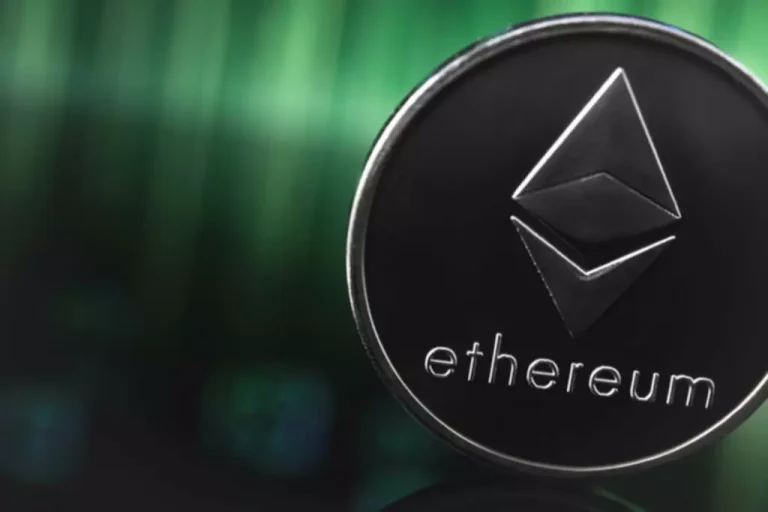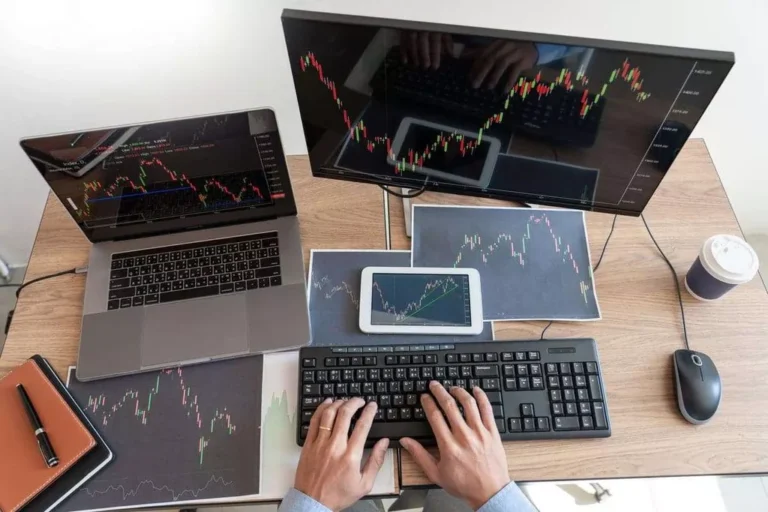Liquidity pools address liquidity, volatility, provide and demand, and pricing challenges in decentralized environments. When an asset has low liquidity, the marketplace for that asset sometimes has high slippage. The belongings in the pool are analogous to the lemonade machines, and the customers What Are Liquidity Pools in Crypto who provide those belongings are like the friends who invested within the business. Liquidity pools use Automated Market Makers (AMMs) to set prices and match patrons and sellers.
In addition, pricing can also be decided by this algorithm based on the trades that occur within the pool. The system that matches orders with each other known as the matching engine. Along with the matching engine, the order book is the core of any centralized change (CEX).

This is because LPs are incentivized to deposit their idle cryptocurrency into liquidity swimming pools by earning income on buying and selling fees. Liquidity pools are created when customers (called liquidity providers) deposit their digital property into a wise contract. A liquidity pool is a collection of digital belongings accrued to allow buying and selling on a decentralized change (DEX). They are created when users lock their cryptocurrency into good contracts that then allows them for use by others. It is important to level out that there are a number of features used by different decentralized exchanges to cost the belongings held in liquidity swimming pools.
There are some particular the place using liquidity pools might have more monetary dangers than safety dangers. Although there are specific situations the place swimming pools for different financial activities may have more dangers than others. Constant perform market makers (CFMMs) are the most popular sort of decentralized trading venue for cryptocurrency tokens.
What Are Liquidity Pools? The Last Word Information To Defi Mechanics
If you’re a liquidity supplier you earn fees from the buying and selling of crypto. You can also obtain liquidity provider tokens and go to execute yield farming strategies to maximize profits on different platforms. DEXs provide liquidity providers with the instruments they should create liquidity pools. Applications like Uniswap v4 and Balancer present granular management over liquidity pool specs. As lengthy as you’ve two tokens to deposit you possibly can create a pool. As acknowledged beforehand, they allow anyone to trade in a peer-to-peer fashion by providing liquidity.
As lengthy as you may have two tokens to deposit into a pool, you can create a liquidity pool. Although some exchanges permits you to create swimming pools with single sided liquidity. A liquidity pool works by creating a pool of cryptocurrencies for liquidity suppliers to deposit their idle crypto into.

You can consider liquidity swimming pools as crowdfunded reservoirs of cryptocurrencies that anyone can access. In exchange for offering liquidity, those that fund this reservoir earn a proportion of transaction fees for each interplay by customers. Liquidity swimming pools, in essence, are pools of tokens which are locked in a sensible contract. They are used to facilitate buying and selling by providing liquidity and are extensively utilized by a variety of the decentralized exchanges a.k.a DEXes. As discussed, liquidity suppliers get tokens (LPTs) when they provide liquidity. With superfluid staking, those LPTs can then be staked to find a way to earn extra rewards.
They allow decentralized trading, lending, yield era, and much more. These sensible contracts energy almost every part of DeFi, and they are going to most probably proceed to do so. You might consider an order e-book change as peer-to-peer, where buyers and sellers are linked by the order book. For instance, trading on Binance DEX is peer-to-peer since trades occur instantly between person wallets. DeFi trading, nevertheless, entails executing trades on-chain, with no centralized party holding the funds.
Crypto Liquidity Swimming Pools Vs Yield Farming – The Inducement Method For Defi
Platforms like Uniswap and Balancer offers customers with the flexibility to create liquidity pools. They might even present granular management vie mechanisms like hooks. They are a significant innovation that enables for on-chain buying and selling with out the need for an order guide. As no direct counterparty is required to execute trades, merchants can get out and https://www.xcritical.in/ in of positions on token pairs that doubtless could be highly illiquid on order guide exchanges. One of the primary protocols to use liquidity swimming pools was Bancor, but the idea gained extra consideration with the popularization of Uniswap. Some other well-liked exchanges that use liquidity swimming pools on Ethereum are SushiSwap, Curve, and Balancer.

But keep in mind that a low slippage restrict may delay the transaction or even cancel it. This is very true when it comes to DeFi and we now have set out a quantity of dangers below that you should learn about. Then, the hacker has to reverse the transaction and promote XYZ for the higher value. If the depth of the protocol’s liquidity just isn’t stable (and even worse, dependent only on the financial incentive), we enter the dangerous floor. Such a phenomenon known as mercenary capital and stands for the money in the crypto space from traders centered on short-term earnings. It first began in 2020, when Synthetix – one of many pioneer DeFi protocols, established an incentive mechanism that turned one of many key catalysts for the DeFi Summer.
To perceive how liquidity pools work, you have to perceive the CFMM (also often identified as the constant product market maker or CPMM for short). Automated Market Makers utilizing liquidity swimming pools provide constant liquidity, as trades all the time have a counterparty (the pool itself). This model can offer decrease slippage in markets with stable and excessive liquidity however may suffer from larger slippage during large trades. This is because prices are set in a liquidity pool by the steadiness between provide and demand. It’s necessary to note that liquidity pools provide liquidity but don’t necessarily clear up the slippage or volatility downside. When a consumer offers liquidity, a sensible contract points liquidity pool (LP) tokens.
Liquidity Pools Get Rid Of Middlemen And Centralized Entities
This is exactly why there was a have to invent something new that may work nicely within the decentralized world and that is where liquidity pools come to play. Some of the 2nd layer scaling tasks like Loopring look promising, however even they are nonetheless dependant on market makers and so they can face liquidity issues. On prime of that, if a user needs to make only a single trade they must transfer their funds in and out of the 2nd layer which provides 2 extra steps to their process. Liquidity swimming pools are one of the core technologies behind the present DeFi technology stack.
- The major reason for that is the fact that the order guide model depends heavily on having a market maker or a number of market makers keen to at all times “make the market” in a certain asset.
- They present the liquidity that’s necessary for these exchanges to function, a bit like how firms transform cash into debt or fairness by way of loans.
- Participating in these incentivized liquidity pools as a supplier to get the utmost quantity of LP tokens is recognized as liquidity mining.
- This can lead to longer wait occasions before the transaction completes.
- As long as you have two tokens to deposit you can create a pool.
They are the base of DeFi, permitting market members to efficiently purchase & promote crypto assets and offering the liquidity to money out (or buy). Curve pools, by implementing a slightly different algorithm, are in a position to supply decrease fees and lower slippage when exchanging these tokens. In essence, market makers are entities that facilitate buying and selling by at all times prepared to purchase or sell a specific asset.
What Are Liquidity Swimming Pools In Defi And How Do They Work?
This article explains what liquidity pools are, how they work, and why they’re so essential to the DeFi ecosystem. Liquidity swimming pools are essential for peer-to-peer trading in decentralized finance (DeFi). That’s why addressing the point of deep & low liquidity is that crucial. Now, let’s take an instance from actual life and put having deep liquidity swimming pools into context. The liquidity swimming pools that we simply described are used by Uniswap and they are the most basic forms of liquidity pools.
These tokens symbolize the liquidity supplier’s share of property in the pool. They use automated market makers (AMMs), that are primarily mathematical features that dictate prices in accordance with provide and demand. Later, we had Compound, which is a protocol that started to distribute COMP tokens to liquidity providers. Have you ever been questioning how the liquidity pools truly work? We mean, the coins you get doing the swap on Uniswap have to come back from someplace.
If the liquidity is round $10M, the $100k promote order will take down the price only by around 1%. Some founders nonetheless don’t understand how low liquidity can negatively affect the price of their token. Before we go any further, it’s worth noting that there are DEXes that work just nice with on-chain order books. Binance DEX is built on BNB Chain, and it’s particularly designed for quick and cheap trading. Another instance is Project Serum being built on the Solana blockchain.
This can occur by either a buyer bidding greater or a seller reducing their worth. Even so, since much of the belongings in the crypto space are on Ethereum, you can’t trade them on different networks except you use some sort of cross-chain bridge. Cryptopedia doesn’t guarantee the reliability of the Site content and shall not be held answerable for any errors, omissions, or inaccuracies. The opinions and views expressed in any Cryptopedia article are solely those of the author(s) and do not reflect the opinions of Gemini or its management. A qualified skilled ought to be consulted prior to making financial choices.
When you deposit funds into a liquidity pool, they’re within the pool. So, whereas there are technically no middlemen holding your funds, the contract itself could be thought of as the custodian of those funds. If there’s a bug or some sort of exploit through a flash loan, for instance, your funds could presumably be lost eternally.
Below are a number of reasons why liquidity swimming pools play such an important role. Also, be wary of tasks where the builders have permission to change the foundations governing the pool. Sometimes, builders can have an admin key or some other privileged access inside the smart contract code. This can enable them to potentially do one thing malicious, like taking management of the funds in the pool. Read our DeFi scams article to attempt to avoid rug pulls and exit scams as greatest you’ll be able to. So far, we’ve principally discussed AMMs, which have been the most popular use of liquidity pools.
Slippage is commonest during times of upper volatility, and can also happen when a big order is executed but there is not enough volume at the selected worth to maintain the bid-ask unfold. In standard order book markets, belongings sometimes trade in opposition to a foreign money. On the other hand, liquidity pool belongings usually are not valued in currency however towards one another. In a crypto order e-book model, the currency that the asset trades in opposition to is also a cryptocurrency. The best risks you will encounter in most areas of crypto are sensible contract risks. Liquidity pools aren’t any exception, as seen in the series of Vyper exploits.

